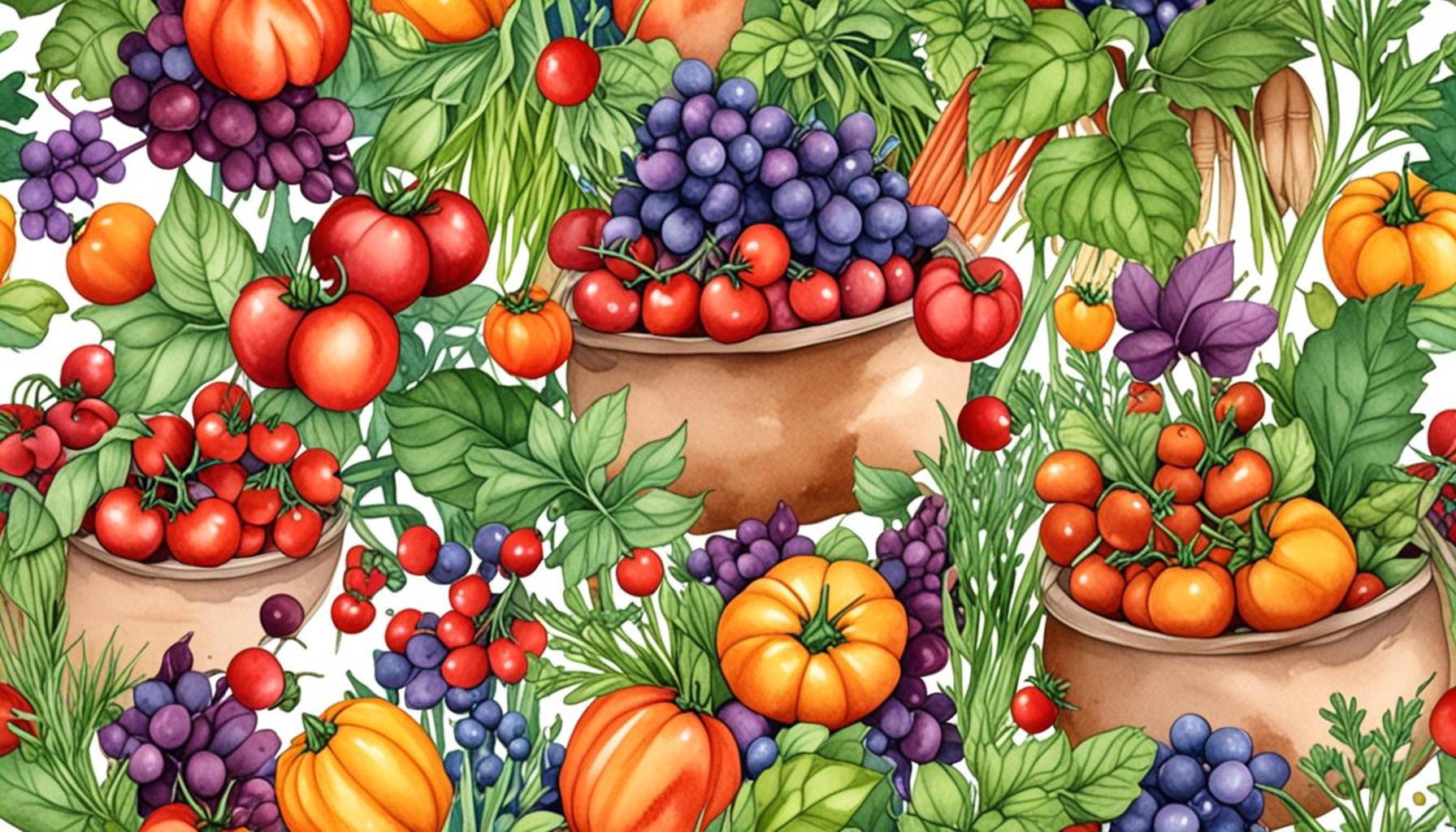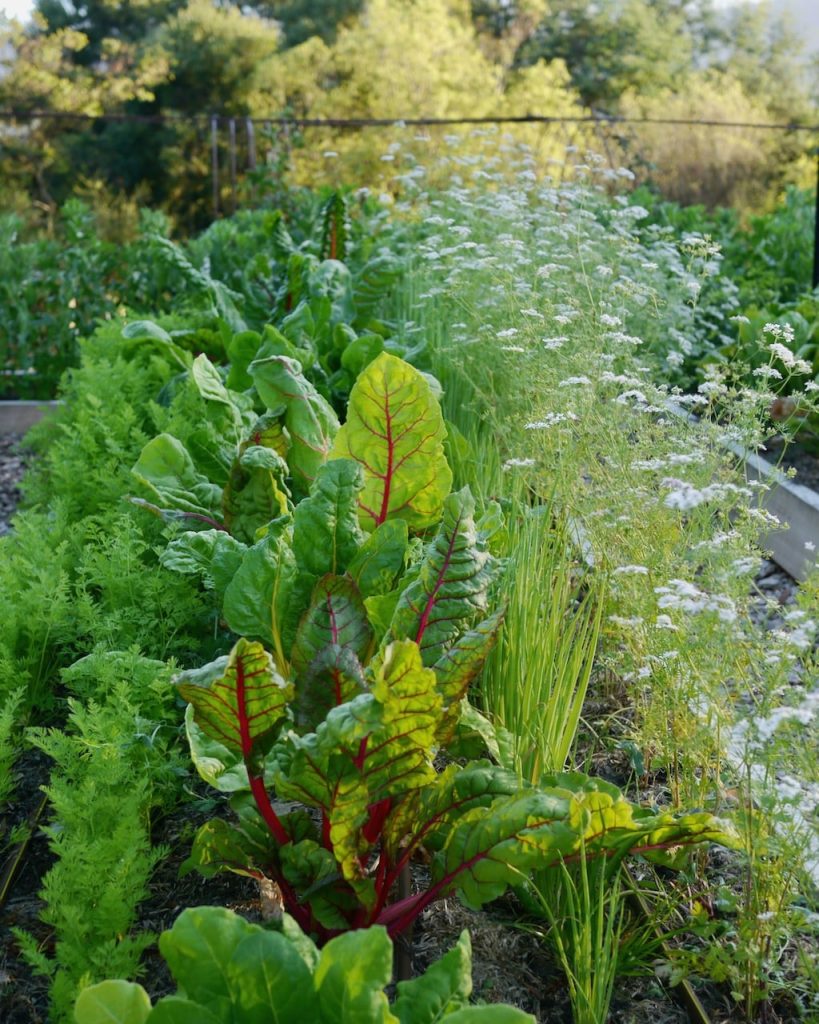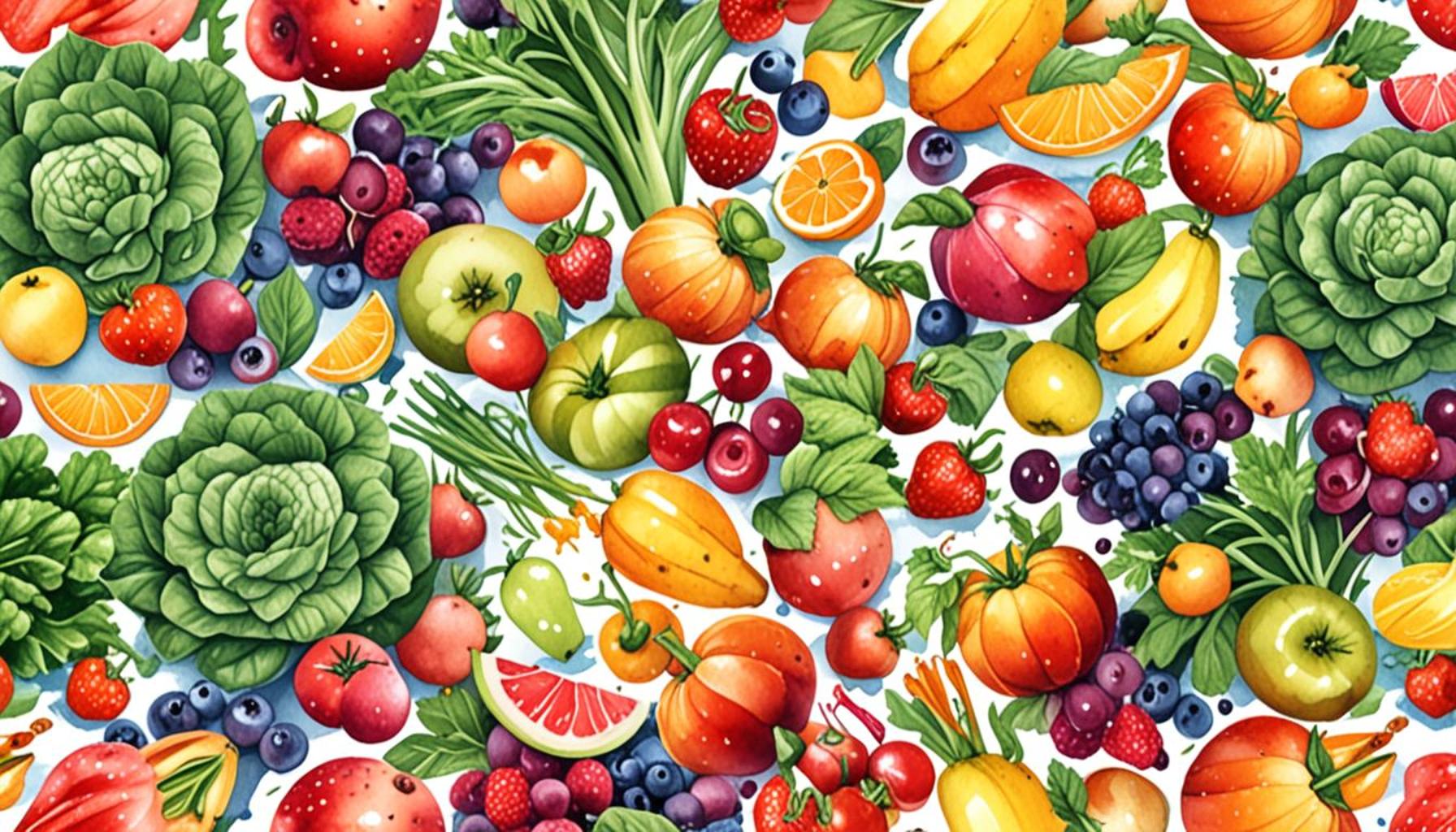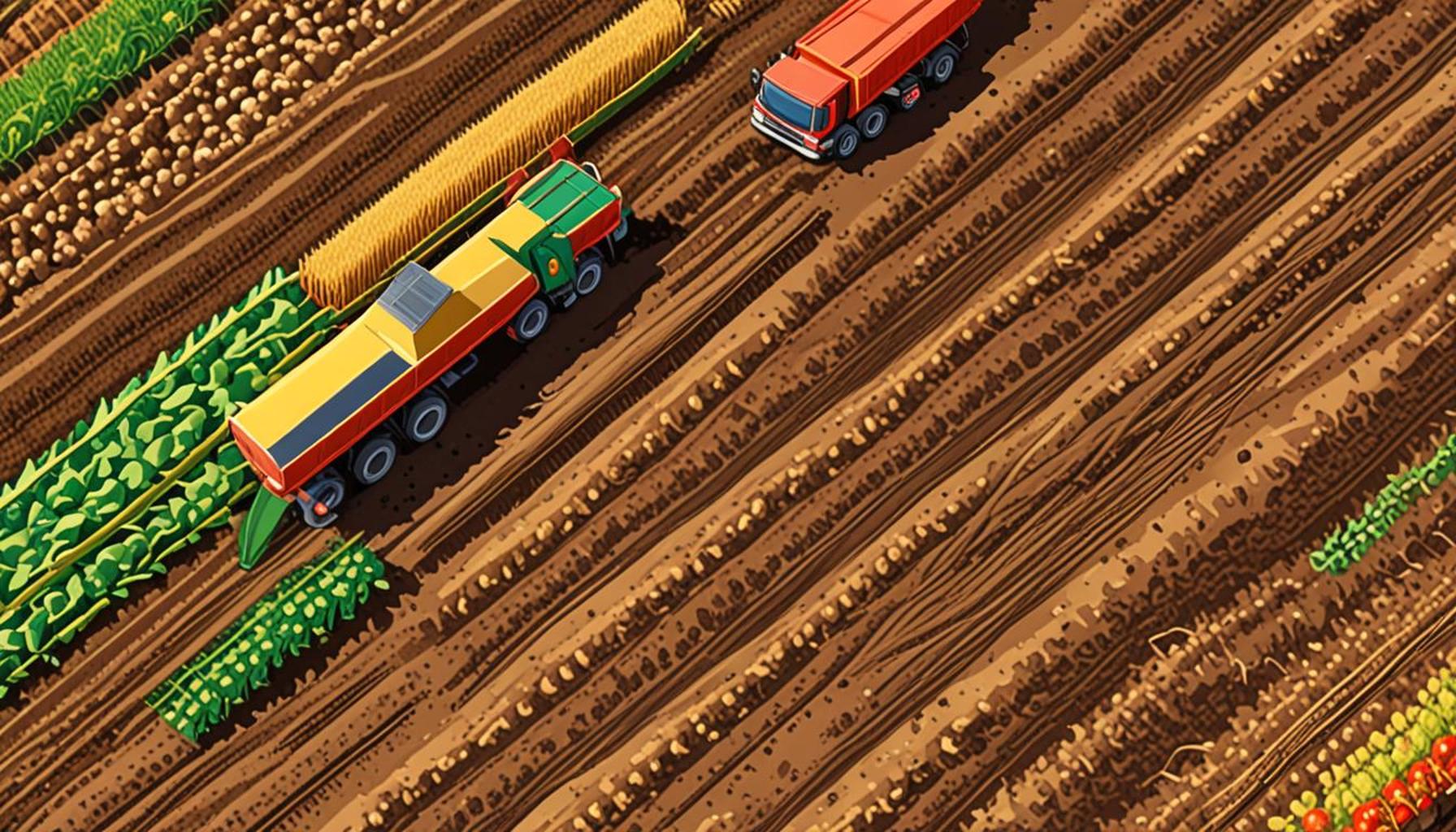Harvest Synchronization: How to Use Companion Plants to Optimize Harvest Timing

Unlocking the Secrets of Harvest Synchronization
Harvest synchronization is a transformative technique that empowers gardeners to optimize their yields through the strategic timing of crop planting and harvesting. This method hinges on the principle of carefully selected companion planting, which not only enhances the quality and quantity of harvests but also fosters a sustainable approach to gardening practices. Understanding the dynamics of plant relationships can be a game changer, particularly for those concerned with the efficiency and health of their gardens.
What is Companion Planting?
Companion planting is the practice of pairing specific plants together so they can mutually benefit one another. This time-honored technique has been utilized by gardeners for centuries and can yield impressive results. Some of the key advantages include:
- Enhancing nutrient uptake from the soil, allowing plants to grow vigorously. For example, interplanting legumes like beans with corn can improve nitrogen levels in the soil, which benefits the corn.
- Repelling pests naturally, creating a more organic gardening experience. For instance, the strong scent of garlic can deter aphids, making it a perfect companion for vulnerable greens.
- Improving flavor by combining certain herbs like oregano or cilantro with vegetables, which can enhance the overall taste of the produce harvested.
By choosing companion plants wisely, gardeners create a balanced ecological system that promotes stronger and healthier crops. For instance, the striking marigold, with its vibrant flowers, is not just decorative; it is known to repel nematodes and other harmful insects when planted alongside tomatoes. Similarly, creating a garden trio with basil, tomatoes, and peppers can enhance both growth and flavor due to their complementary nutrient needs and pest-repelling properties.
Why Optimize Harvest Timing?
Harvest timing plays a crucial role in gardening success, and there are several compelling reasons to focus on this aspect:
- Harvesting at peak ripeness not only improves flavor but also enhances the nutritional value of the crops. For example, corn harvested fresh from the stalk contains higher sugar levels compared to ears picked too late.
- Synchronizing plant cycles prevents overcrowding and competition for light, water, and nutrients. This means plants can grow more efficiently without being stunted or overshadowed by their neighbors.
- Efficient harvests can significantly reduce labor time and costs, allowing gardeners to enjoy the fruits of their labor without excessive effort. Streamlining the harvest process can also make for a more enjoyable and productive gardening experience.
Diving into the world of harvest synchronization opens up exciting possibilities for anyone with a passion for gardening. By understanding and applying these principles, gardeners not only cultivate more bountiful yields but also foster an environment of health and sustainability. Exploring these interconnected elements can lead to impressive results, prompting many to embrace new strategies in their gardening endeavors. Whether you’re a seasoned gardener or just starting out, the journey of learning about harvest synchronization can reshape your gardening experience for the better.

DISCOVER MORE: Click here to learn about pest-resistant plants
Understanding the Benefits of Harvest Synchronization
At the core of harvest synchronization lies a synergy that arises from robust planning and the intelligent use of companion plants. By pairing specific crops together, gardeners can optimize not just the health and flavor of their plants, but also the timing of their harvests. Timing, after all, can dictate the overall success of a garden; a skillful gardener recognizes that the key to unlocking potential yields relies on understanding the growth habits and life cycles of their chosen plants.
Key Principles of Harvest Synchronization
A successful harvest synchronization strategy involves several principles that can dramatically enhance a gardener’s ability to achieve peak productivity:
- Crop Rotation and Succession Planting: By rotating crops and practicing succession planting—planting a second crop in the same area after the first has been harvested—gardeners can ensure continuous yields throughout the growing season. For example, after harvesting early-season peas, one might plant late-season squash in the same bed to take advantage of available sunlight and nutrients.
- Diverse Plant Pairings: Cultivating plants with different growth rates and requirements can allow for a staggered yet synchronized harvest. Fast-growing crops like radishes can be planted among slower-growing vegetables like carrots. By the time the radishes are ready, the carrots are still establishing themselves, leading to efficient use of garden space.
- Seasonality Awareness: Understanding the unique seasonal preferences of crops is also critical. Cool-season crops (like spinach and kale) can be paired with warm-season crops (like tomatoes and peppers), allowing for seamless transitions between harvests as temperatures shift. This thoughtful approach ensures nothing goes to waste and enables a steady supply of fresh produce.
For gardeners in the United States, especially in regions with distinct growing seasons, the timing of specific crops can greatly influence overall garden health. For instance, pairing broccoli, a hardy cool-season crop, alongside tomatoes, which thrive during warmer months, sets the stage for optimized harvest schedules. By planting them strategically, you can stagger your harvests, maximizing yield while minimizing stress on the garden ecosystem.
Identifying Compatible Companion Plants
Companion planting is the foundation upon which successful harvest synchronization is built. Some compelling combinations to explore include:
- Nasturtiums with Cucumbers: These vibrant flowers not only attract pollinators but also deter pests like aphids, ensuring cucumbers flourish and yield tastier fruits.
- Carrots and Onions: This pairing provides a natural defense against pests, as the scents of each crop confuse and repel common nuisances.
- Corn, Beans, and Squash: Known as the “Three Sisters,” this traditional combination embodies perfect synergy. Corn provides height for beans to climb, while beans enhance nitrogen in the soil, benefiting the squash below.
By tapping into the power of intelligent companion planting, gardeners can not only enhance their harvests but also cultivate a thriving ecosystem that supports sustainable practices. The journey towards mastering harvest synchronization is filled with discovery, experimentation, and the joyous gratification that comes from watching plants grow in harmony.
| Advantage | Details |
|---|---|
| Increased Efficiency | By implementing companion planting, farmers can maximize their yield and optimize harvest time, ensuring that crops are ready for harvesting when conditions are ideal. |
| Natural Pest Control | Certain companion plants repel harmful insects, reducing the need for chemical pesticides and promoting a healthier ecosystem, leading to a better harvest quality. |
Companion planting serves as a powerful strategy to improve crop rotation methods, allowing farmers to naturally space their planting schedules. When crops are planted in association with one another, they can outsmart pests that prefer specific plants. For instance, planting marigolds alongside vegetables can deter nematodes and aphids, often a destructive force in gardens. Another key benefit of this approach is achieving a staggered harvest period. By choosing companion plants that mature at different times, farmers can enjoy a prolonged harvesting season. This method not only boosts productivity but also enhances the nutritional diversity of the harvest, making it possible to cater to varying market demands.Incorporating these practices into your planting regimen allows for sustainable agriculture, creating a thriving environment for beneficial insects and enhancing soil health, crucial for long-term productivity. Have you considered the advantage of planting basil alongside tomatoes? It enhances flavor and wards off certain pests, showcasing the effectiveness of companion planting to optimize your yield. Stay tuned for more insights on how integrating companion planting can transform your gardening and farming endeavors!
DISCOVER MORE: Click here to learn about air-purifying indoor plants
Maximizing Harvest Potential through Strategic Planting
In the realm of harvest synchronization, the effective use of companion plants goes beyond merely planting two crops next to each other; it encompasses a strategic framework that optimizes growth conditions, pest management, and nutrient cycling within the garden ecosystem. When planning your garden, understanding the micro-environments created by specific plant pairings can lead to significant yields and a resounding sense of satisfaction for the grower.
Building Biodiversity in the Garden
A biodiverse garden is not only more resilient but can also enhance the flavor and nutritional profiles of the plants grown. Diversity in companion planting supports a web of beneficial interactions among plants, insects, and soil microbes. Research has documented that diverse cropping systems lead to increased resilience against pests and diseases, ultimately translating into higher-quality harvests. For example, interspersing herbs like basil among tomato plants is a well-documented strategy that enhances tomato flavor while expelling pests such as thrips and aphids.
The Role of Soil Health in Harvest Synchronization
Another critical component of harvest synchronization is maintaining soil health. The use of companion plants can naturally enrich soil fertility. For instance, leguminous plants like peas and beans fix atmospheric nitrogen and improve soil quality when planted with crops such as corn or carrots. Observing the growth patterns and harvest readiness of these legumes in relation to neighboring plants can provide insight into when to expect both crops to reach maturity, effectively coordinating harvest timelines.
Season Extension Techniques
Season extension is an essential aspect of maximizing yields in various growing regions across the United States. By adopting planting techniques such as using cold frames, row covers, and high tunnels, gardeners can extend the growing season in cooler climates. Pairing early spring crops like radishes with late spring or early summer plantings can facilitate a continuous harvest. For instance, once radishes are pulled, their execution opens space for late-season heat lovers like peppers while simultaneously shielding young pepper plants from cooler temperatures.
Practical Considerations for Planning Your Companion Planting
When implementing companion planting for optimized harvest timing, a systematic approach can assist in making the process manageable. Here are a few tips for creating a successful companion planting strategy:
- Keep a Garden Journal: Document planting dates, growth rates, pest occurrences, and harvest yields to refine your strategies for future growing seasons.
- Research Crop Maturity: Familiarize yourself with the average days to maturity for each plant introduced into your garden; this understanding helps align planting schedules for synchronized harvests.
- Focus on Crop Diversity: Integrate an assortment of vegetables, herbs, and flowers that together foster a symbiotic relationship. For example, incorporating flowers like marigolds can attract beneficial insects while battling harmful pests.
By embracing these principles of harvest synchronization and companion planting, gardeners will not only increase their efficiency but also enjoy the many benefits of a thriving, diverse garden. Each planting season presents an opportunity to experiment, learn, and grow harmoniously alongside the natural rhythms of the garden ecosystem.
DON’T MISS OUT: Click here to enhance your harvest strategy</p
Conclusion: Embracing the Art of Harvest Synchronization
Incorporating companion plants as a method for harvest synchronization is both an art and a science that can transform the home garden into a thriving ecosystem. By understanding the intricate relationships between different plants, gardeners can optimize their growing conditions, enhance soil health, and improve pest resistance. The diversity achieved through companion planting not only bolsters the resilience of the garden but also enriches the flavor profiles and nutritional value of the harvest.
The insights gathered from practical strategies, such as observing the growth patterns of legumes alongside main crops or employing season extension techniques, lay the groundwork for successful timing in harvests. Maintaining a garden journal will serve as a valuable resource, allowing you to refine your methods season after season. As you embark on your journey of optimizing harvest timing, consider every planting decision as a chance to experiment and learn.
Ultimately, the goal of harvest synchronization is to create a sustainable and productive garden that responds harmoniously to the natural rhythms of life. By embracing this approach, you’re not just ensuring a bountiful supply of fresh produce but also fostering a deeper connection to the land and its cycles. Dive into the world of companion planting, and unlock the full potential of your garden, paving the way for an enriched and rewarding gardening experience.



